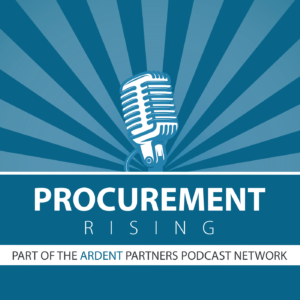Ardent recently completed its sixteenth annual CPO-themed market research study, “The State of Procurement & the CPO”, which is part of an ongoing dialogue that my team and I have had with Chief Procurement Officers (CPOs) and other procurement leaders for more than a decade. Over the next few weeks, we’ll be discussing the results from this year’s study in a series of articles on this site. If you’d like access to this report, make sure to register for our newsletter with a business email address.
If intelligent leadership is critical to a procurement team’s success, intelligence is equally important at the organizational level. Accordingly, CPOs know that they must develop and expand the organization’s intellectual capacity and invest in ways to fully leverage it across the entire scope of operations. But while intelligence can be a great asset, if it is not applied or applied correctly, its value is considerably lessened. The same thing can be said of an organization’s resources, efforts, and focus.
Organizational alignment with executive priorities strengthens the CPO’s bond to executives and earns confidence. More importantly, it helps increase the impact that procurement can make on what is most important to the business. After all, it does no good to be great at unimportant things; it does no good to be focused on the wrong things. Like a Formula One racing car, a procurement organization that operates with high precision and tight alignment can be the difference between winning and losing (or finishing and crashing). It can be what separates the Best-in-Class from their competitors. Poor alignment creates bigger internal problems over time, damaging other car parts. Even with a superior driver (i.e., the CPO), teams that leave small problems unaddressed can be forced to invest more later to fix much larger problems.
In many ways, the CPO’s strategic agenda is emblematic of procurement’s evolution over the past 15 to 20 years as well as its current state. When the first edition of Ardent’s annual CPO report published in 2006, less than half of all procurement organizations used an annual strategic plan as a blueprint to execute its operations. Many of these departments were poorly organized and essentially working on things in an ad-hoc manner – tackling projects in no particular order and for no particular reason. Fast forward to 2021 and almost every procurement organization operates with at least a single-year strategic plan, and a vast majority utilize a multi-year plan.
This is a positive step forward for the industry, and yet, not enough.
If you are interested in learning more about the key procurement and CPO data collected in our annual research study, consider listening to Ardent’s brand new “Procurement Rising” podcast series. Click below to listen to new episodes. The podcast is also available on Apple, Spotify, Stitcher, Google, or wherever you get your podcasts.
Tagged in: Ardent Partners Research, Chief Procurement Officer, CPO, Leadership, Performance, State of Procurement 2021, Strategy










